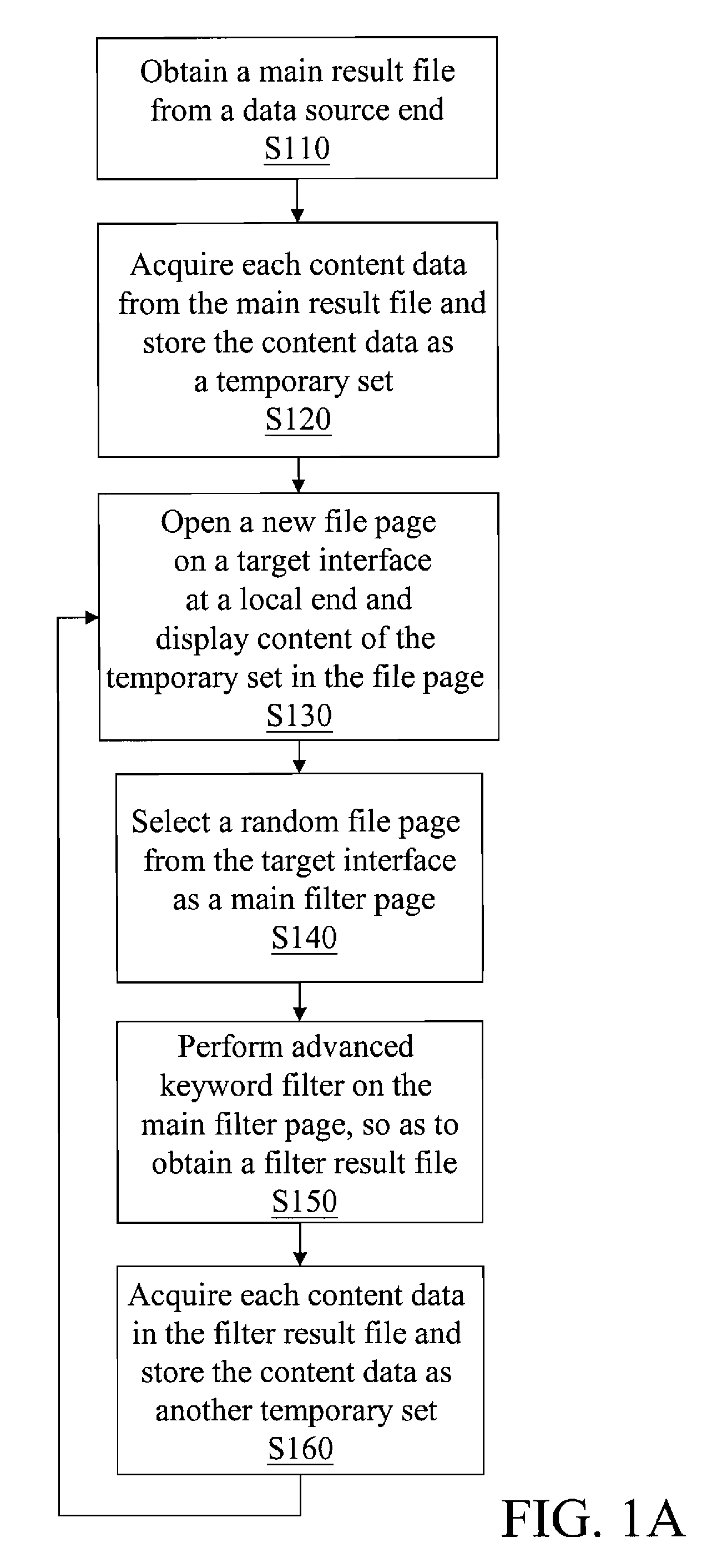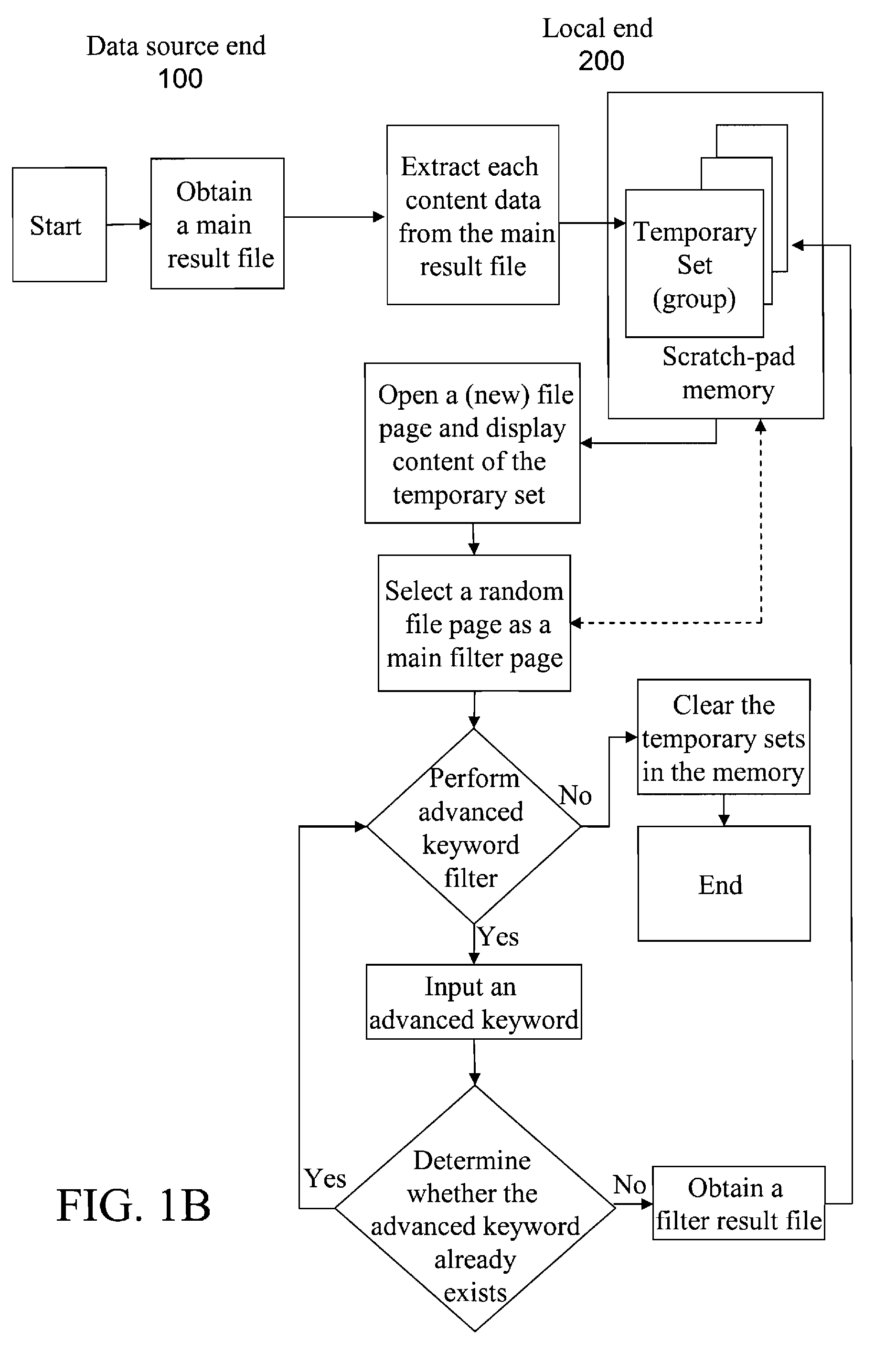Method for filtering file clusters
- Summary
- Abstract
- Description
- Claims
- Application Information
AI Technical Summary
Benefits of technology
Problems solved by technology
Method used
Image
Examples
Embodiment Construction
[0053]The method provided in the present invention below may be realized through execution by a common computer comprising, but not limited to, computer equipment such as a personal computer, a notebook computer, a personal digital assistant (PDA), and a server. Persons skilled in the art can implement the present invention with the knowledge of the method described below according to the present invention. In addition, in the method of the present invention, history records and respective search results of each advanced filter are presented on a target interface (a web browser or a designed visual presentation platform (that is, an application)) in a presentation mode of opening a new page or updating an index list.
[0054]The method of the present invention is applicable for performing a plurality of advanced filter actions with different filter conditions and independent from each other on any file cluster (that is, a main result file). The file cluster may be search results genera...
PUM
 Login to View More
Login to View More Abstract
Description
Claims
Application Information
 Login to View More
Login to View More - R&D
- Intellectual Property
- Life Sciences
- Materials
- Tech Scout
- Unparalleled Data Quality
- Higher Quality Content
- 60% Fewer Hallucinations
Browse by: Latest US Patents, China's latest patents, Technical Efficacy Thesaurus, Application Domain, Technology Topic, Popular Technical Reports.
© 2025 PatSnap. All rights reserved.Legal|Privacy policy|Modern Slavery Act Transparency Statement|Sitemap|About US| Contact US: help@patsnap.com



